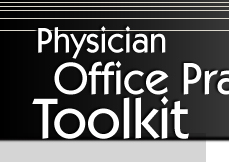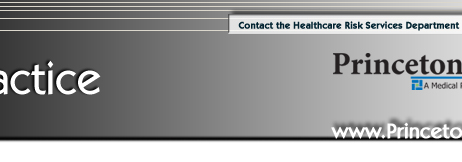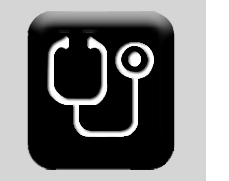 |
 |
 |
 |
 |
 |
home > Guidelines Introduction > Guidelines Index
Risk Management Guidelines for the Physician Office
Download the complete Physician Toolkit including guidelines, forms and resources (275 pages)
Risk Management Defined
Risk Areas in a Physician Office
Goals for a Risk Management Program
Adverse Events Reporting and Investigation
Billing and Collection Practices
Discharging a Patient from Your Practice
Merging or Closing a Practice
Patients Who Do Not Adhere to Their Treatment Plans
Risk Financing
Treating Minors
Communicating With Patients and Other Providers
Office Culture
Making a Positive Impression
Remember Common Courtesies
Listen
Ensure Understanding
Follow Through
Patient Satisfaction
Patient Satisfaction Surveys
Patient Triage
Effective Telephone Communication
Phone Set Up
Giving & Receiving Medical Information
Handling Prescription Refill Requests
What to Document
Answering Service
Monitor Trends
Communicating Test Results is Critical
Email Communications
Shared Decisions, the Dialog of Consent
Communication Tools
Patient Agendas
Practice Brochures/Websites
Visit Summaries
Team Huddles
Posters
Handouts
Communicating Under Stress
Anger and Violence
Disclosing Difficult Information/Apologizing
Patient Complaints
Patients Who Record Conversations with You
Communicating With Other Providers
Consults and Referrals
For referring physicians
For consulting physicians
Hallway Consults
Follow-up Systems for the Physician Office: Overview
Tracking Systems
How to Develop Manual Tickler System
Documentation Which Supports Your Tracking System
Patients Who Require Special Tracking
Hiring
Credentialing and Employee Records
Monitoring and Coaching Your Staff
Policy/Procedure Manual
Physician Coverage
Special Circumstances
Locum Tenens
Manufacturers Representatives
Students in the Office as a Learning Experience
Miscellaneous Legal and Regulatory Issues
Abuse, Neglect, and Domestic Violence
Children
Adults
Domestic Abuse
Advance Directives
The Americans with Disabilities Act (ADA)
Contract Management
Corporate Compliance Program
Basic Compliance Program Elements
Handling Medical Board Complaints and Malpractice Claims
Malpractice Claims and Summons
Medical Board Complaints
Health Insurance Portability and Accountability Act (HIPAA)
Informed Consent
Clinical Trials
Managed Care
Mandatory Reporting to State Agencies
OSHA
Subpoenas and Other Requests for Medical Records
Vicarious Liability (Apparent Authority)
Documentation Guidelines
Avoid Insufficient Documentation
Understand Documentation Mechanics
Prevent Inappropriate Documentation
Record Handling
Chart Auditing
Chart Structure
New Patients with Old Charts
Record Destruction
Unplanned Record Destruction
Retention of Records
Storage of Old Records
Release of Records
Subpoenas for Medical Records
Court Orders
Release of Original X-Rays
Electronic Health Records (EHR)
Electronic Medical Records: Patient Safety & Risk Management Guide
Medication Storage and Control
Medication Lists
Allergy Documentation
Prescriptions
Patient Drug Education
Medication Samples
Administering Vaccines, Medications, and Allergens in the Office
Office-based Procedures and Diagnostics
On-site Procedures
Primary Areas of Risk
Patient Screening and Selection
Anesthesia Plan of Care
Staff Competencies and Credentialing
Informed consent
Pre-op procedures
Intra-op procedures
Post-op period
Post-discharge
Emergency Equipment/Supplies
Process for Emergency Transport
Written Policies and Procedures
Performance Improvement/Quality Assurance activities
Cosmetic Procedures
On-Site Diagnostics
Medical Equipment
Emergency Preparedness
Injection Safety
Infection Control Recommendations from the CDC
Office Safety Manual
An Office Safety Manual
Policy & Procedure: Defibrillators/AEDs & Crash Carts
Policy & Procedure: Electrical Safety
Policy & Procedure: Electronic Equipment & Systems Protection
Policy & Procedure: Emergency Response
911 Poster
RACE fire safety diagram
Policy & Procedure: Fire Safety
Policy & Procedure: Hazardous & Medical Waste
Policy & Procedure: Infection Control
Policy & Procedure: Investigating Events in the Office Practice
Event/Complaint Report
Instructions for Completing Event/Complaint Report
Policy & Procedure: Medical Equipment Management
Medical Equipment Tracking Log
Policy & Procedure: Security Management
Environmental Safety Self Assessment
Infection Control Self Assessment
Helpful Links for Office Practices